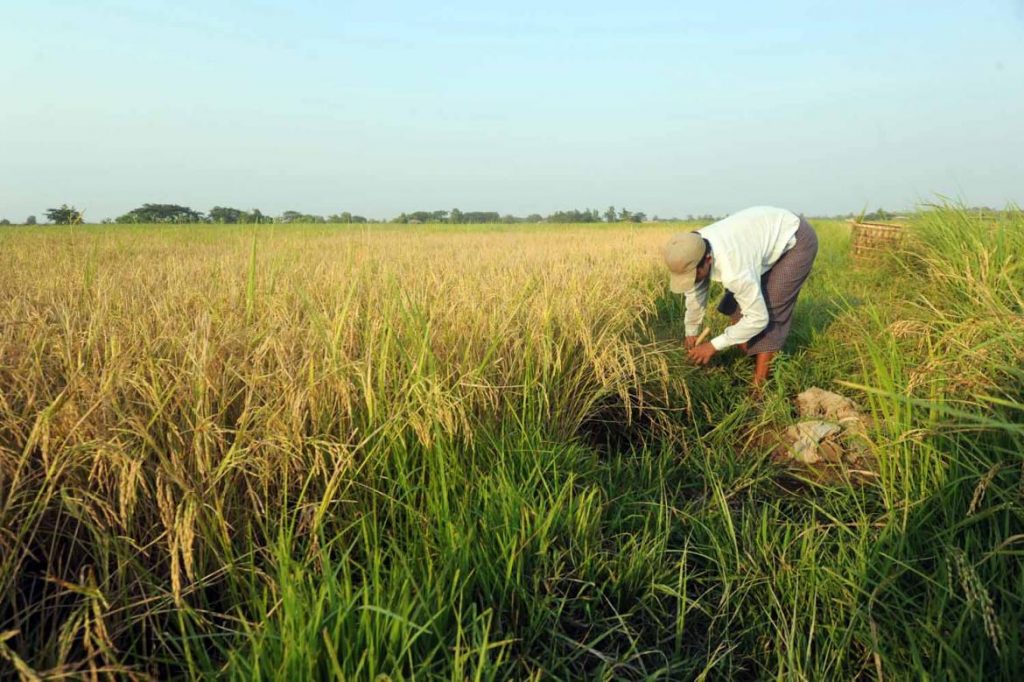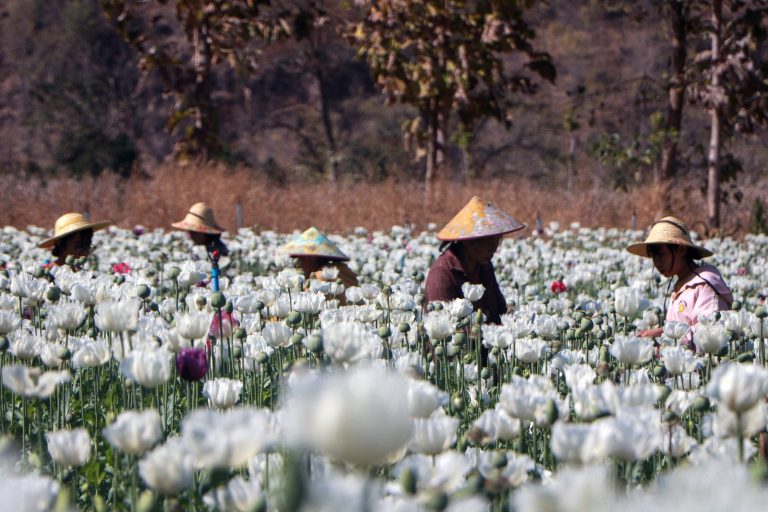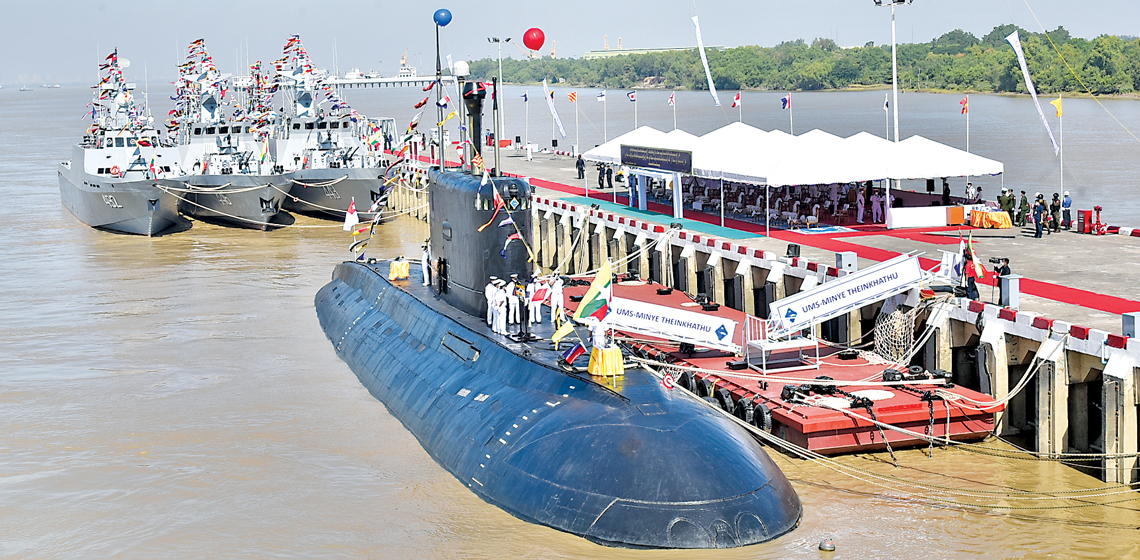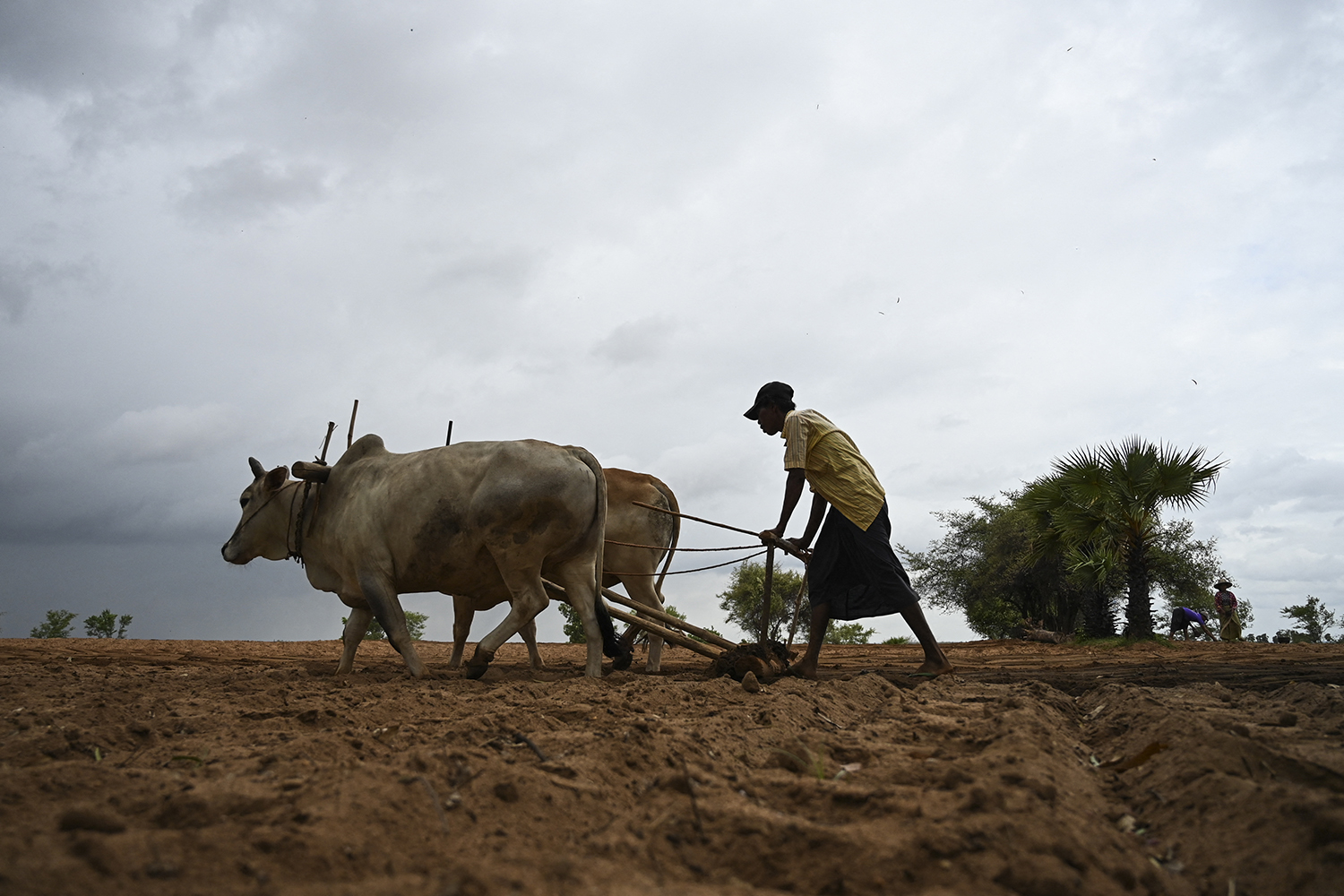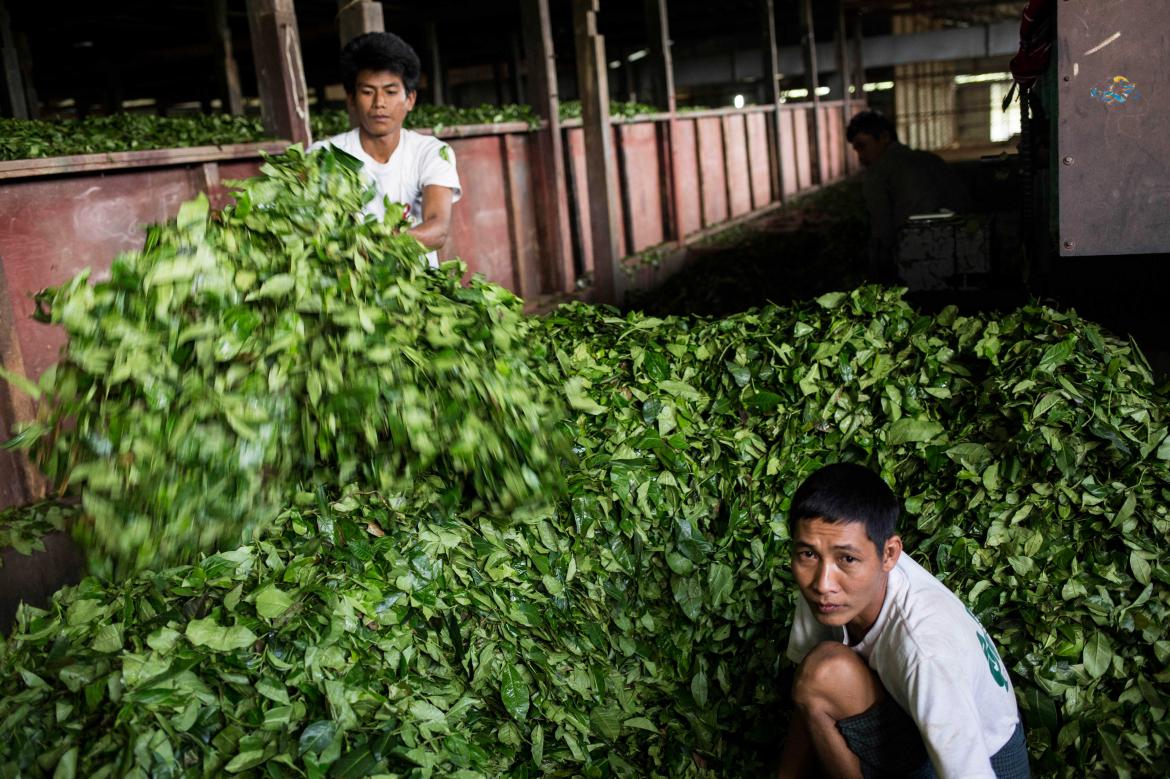Rice farmers are enduring hard times because production costs have exceeded the return on months of hard toil, with prices at their lowest levels since 2012.
By HTUN KHAING | FRONTIER
FALLING RICE prices have brought misery for many of the farmers who comprise about two-thirds of Myanmar’s population.
Months of hard toil have produced a bitter harvest of financial losses.
According to farmers interviewed by Frontier, in October, the price for 100 baskets of unhusked paddy fell to between K300,000 and K430,000, down from K550,000 in October 2015.
“It costs about K300,000 to plant an acre [of paddy],” said U Hla Htay, 58, who grows rice on his 20-acre farm at Yenangyaung village in Ayeyarwady Region’s Maubin Township. “After harvest we get about 80 baskets of paddy [per acre], so if the price for 100 baskets is K300,000, we suffer a big loss.”
Support more independent journalism like this. Sign up to be a Frontier member.
Rice prices in Myanmar this year are the lowest since 2012, when prices for the staple crop fell steeply around the world, according to data from the Myanmar Rice Federation.
000_iv238.jpg
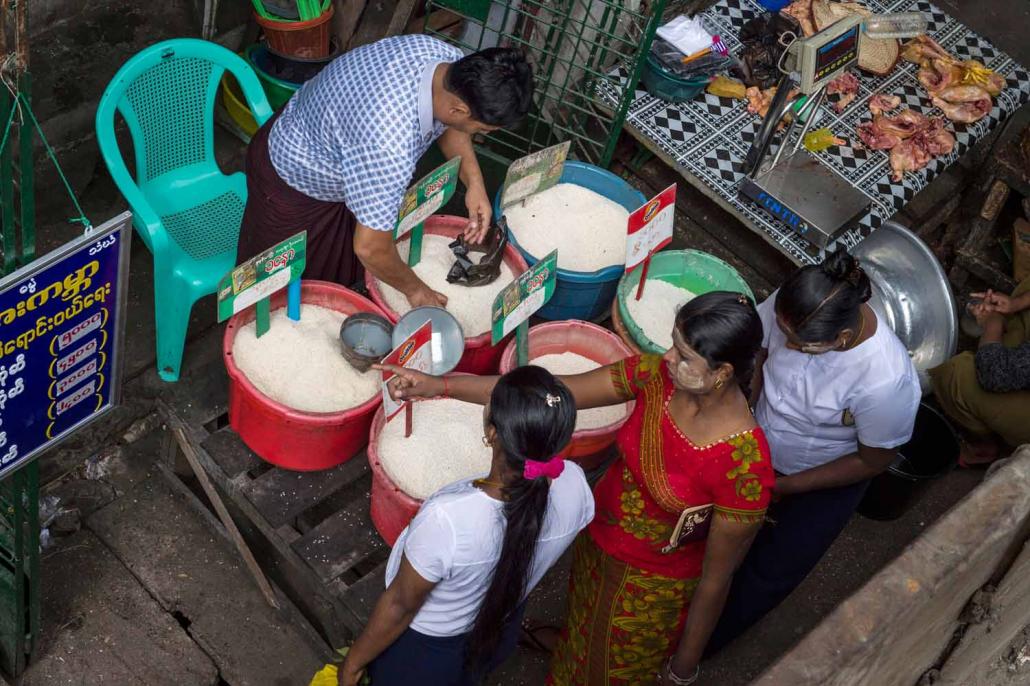
Women buy rice at a market in Yangon. (AFP)
One reason for lower prices on global markets this year is better harvests in many countries. In Myanmar, the issue of lower prices is exacerbated by the fact that large amounts of rice were damaged by heavy rain during the monsoon, said Dr Soe Tun, vice president of the MRF.
“Very poor farmers do not have the technology to solve the problem of wet rice; they cannot afford to use equipment or machinery that dries the rice,” he said, adding that some rice mills also lack drying equipment.
Farmers have also been indirectly affected by the decision in June by China border authorities to crack down on the export of rice and other crops from Myanmar.
“China now defines the rice coming from Myanmar as an illegal import,” said U Tun Lin Soe, a trader at the 105-mile trading zone outside Muse.
“Many traders [in China] were still accepting Myanmar rice, pretending not to see it. But now they stop the import of rice from Myanmar when they want to,” he said.
Myanmar traders see huge potential in the China market because traders there are willing to buy rice of any quality, often at higher than the prevailing price. But exporting rice to China is risky.
Traders who export rice to China through Muse rely on informal agreements that involve being paid for shipments two weeks after delivery. If the rice is intercepted and seized by the Chinese authorities, the traders don’t get paid.
“If the rice is seized on the China side within two weeks of delivery, traders on the Myanmar side will not be paid. We are the ones who lose,” said Tun Lin Soe.
Despite the risks of exporting illegally to China, traders continue to do so because it is easier to send shipments there than to other markets.
In 2003, when the junta liberalised the domestic rice trade after 30-years of state procurement, it established a committee that set three guidelines for exports: rice must be in surplus, exporters must pay a 10 percent export tax, and net earnings after taxes were to shared 50-50 between the government and exporters.
Between 2003 and 2008 only companies that specialised in the rice sector were permitted to export. Private companies involved in other sectors were permitted to enter the market between 2008 and 2011, when economic reforms saw the market opened to any company that wanted to export rice through border or maritime trade.
Since 2011, China has become the main buyer of Myanmar rice, but exports have been affected by its strict import controls.
“As I see it, it is partly related to the new government,” said Soe Tun. “The previous government had a close relationship with China, but the NLD [National League for Democracy] government is generally seen to be closer to the United States and the West. This year, we have seen more seizures of Myanmar rice across the border,” he said.
nswks-5.jpg
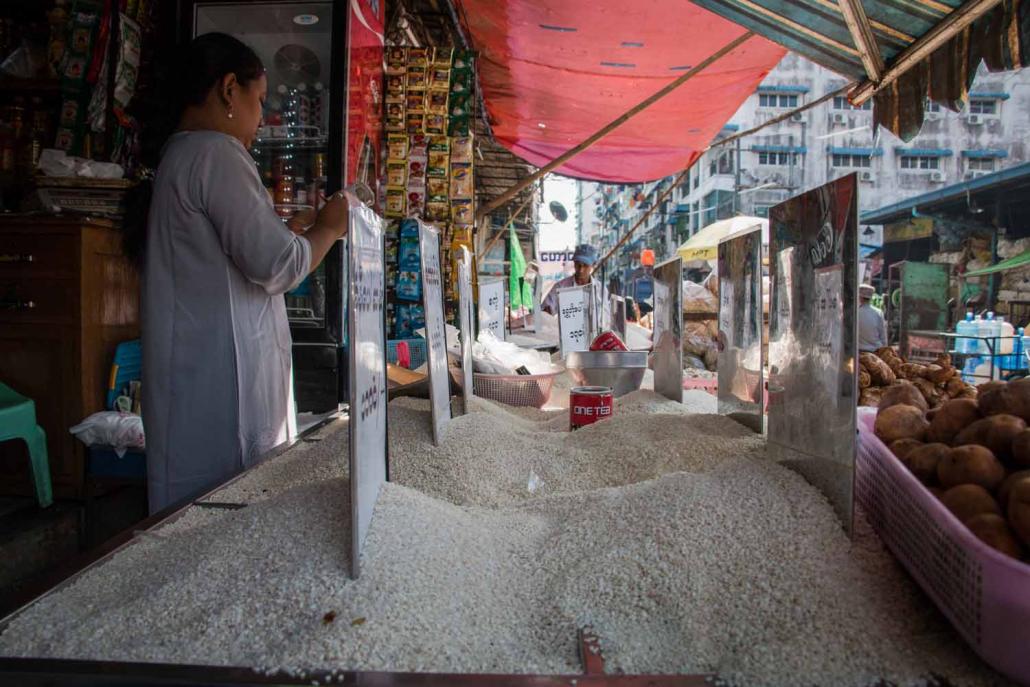
Nyein Su Wai Kyaw Soe / Frontier
As Myanmar is still a predominantly agricultural country, some lawmakers are pushing for policies that will protect farmers and help the rural economy to grow and ultimately benefit the entire country.
“For there to be success in Myanmar’s political reform, we need to strive to improve the lives of farmers, who constitute more than 70 percent of the population,” said U Sein Win (NLD, Maubin Township), who chairs the Pyithu Hluttaw committee for farmers, workers and youth affairs. “When farmers are doing well, political stability exists in the country. The government should give a priority to solving the problem of falling rice prices.”
The government says it is trying to solve the issue, but there’s a paucity of detail. U Myo Tint Tun, deputy permanent secretary of the Ministry for Agriculture, Livestock and Irrigation, told Frontier that the issue is being tackled at ministerial level, but did not elaborate.
Last week, the ministry initiated a K15 billion program where it buys rice from farmers at a fair price.
Soe Tun said the government’s reaction to the low prices had been too slow.
Meanwhile, paddy farmers are waiting for prices to recover.
“Never put your fate in the hands of a man. The rice price is a good example of that,” said Sein Win.


